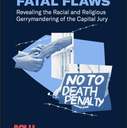
Philadelphia, Pennsylvania—the nation’s third largest death-penalty county—has elected as its new district attorney a candidate who ran on a platform of ending mass incarceration and eschewing use of the death penalty. Democrat Lawrence Krasner (pictured), a longtime civil rights lawyer and opponent of the death penalty, who once joked that he’d “spent a career becoming completely unelectable,” received 75% of the vote in easily defeating his Republican opponent Beth Grossman. As a civil rights and criminal defense attorney, Krasner had represented political protesters and Black Lives Matter activists, and had sued the Philadelphia Police Department on numerous occasions. He has likened use of the death penalty to “lighting money on fire,” saying that capital punishment “has cost Pennsylvania taxpayers over $1 billion, yet no one on Pennsylvania’s death row has been put to death involuntarily since 1962.” A July 2015 DPIC analysis of death sentences imposed in Philadelphia reported that at least 148 death sentences imposed in the city since Pennsylvania reinstituted the death penalty in 1974 had been overturned. In that time, one prisoner from Philadelphia — who voluntarily dropped his appeals — was executed. Krasner called his election a “mandate” for “transformational change.” He said, “[t]his is a story about a movement. And this is a movement that is tired of seeing a system that has systematically picked on poor people — primarily black and brown poor people.” Those are the people who, historically, have been most disproportionately affected by Philadelphia’s death penalty. A major study of Philadelphia’s death penalty in the 1980s and 1990s documented that black capital defendants faced more than triple the odds of being sentenced to death than did other defendants, and that an estimated one-third of the more than 100 African Americans who were on the city’s death row at the turn of the century would have received life sentences but for their race. Another study showed that death-sentencing in the city was heavily influenced by a defendant’s physical appearance: the probability that a black defendant charged with killing a white victim would be sentenced to death doubled if the defendant was perceived as having “stereotypically African” physical features — darker skin, a broader nose, and thicker lips. Even as the number of death sentences imposed in Philadelphia has dramatically declined—falling from an average of 9.9 death sentences per year in the 1990s to less than one sentence per year this decade—the racial disproportionality of the death sentences imposed in the city has grown. Nine of the 99 death sentences imposed in Philadelphia in the 1990s were directed at white defendants, as compared to only one of the 25 death sentences imposed this century, and 45 of the last 47 people sentenced to death in the city have been defendants of color.
(C. Brennan and A. Whelan, “Larry Krasner wins race for Philly DA,” Philadelphia Inquirer, November 7, 2017; H. Otterbein, “Completely Unelectable” Progressive Larry Krasner Wins DA’s Race,” Philadelphia Magazine, November 7, 2017; J. Kopp, “Progressive Larry Krasner easily wins Philly’s district attorney race,” Philly Voice, November 7, 2017; R. Dunham, “Philadelphia Death Row (by date),” Death Penalty Information Center, December 10, 2016; R. Dunham, “Pennsylvania Capital Case Summary of Grounds for Reversal (Philadelphia),” Death Penalty Information Center, July 30, 2015.) See Costs, New Voices, and Race.


